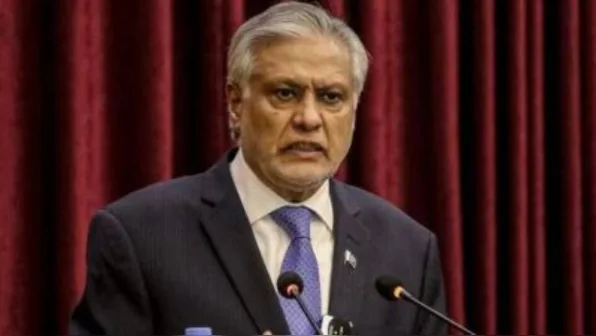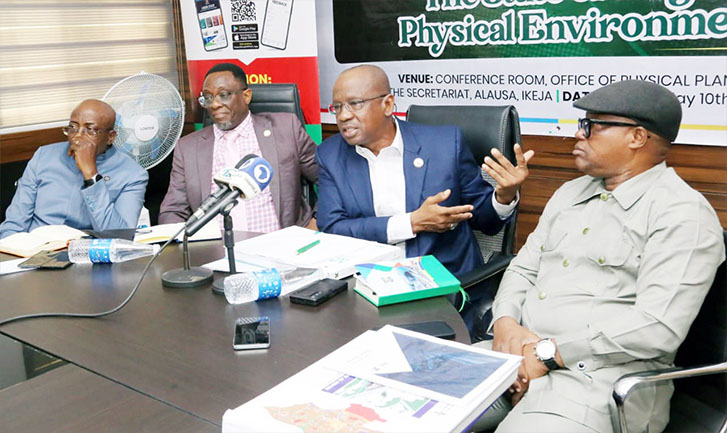India Rejected Third-Party Mediation During Operation Sindoor, Says Pakistan Foreign Minister Dar
By Siddhi Vinayak Misra
Copyright breezyscroll

What sparked the debate over Operation Sindoor?
Operation Sindoor marked one of the most significant escalations between India and Pakistan in recent years. Launched after the April 22 Pahalgam terror attack that killed 26 people, the operation saw India carry out precision strikes targeting nine terrorist infrastructures in Pakistan and Pakistan-occupied Kashmir. India rejected third-party mediation during Operation Sindoor, according to Pakistan’s foreign minister, Ishaq Dar.
While India maintained its stance of self-defense, Washington claimed a different story. US President Donald Trump publicly asserted that his administration had mediated between the two nuclear-armed neighbors, claiming it averted a potential “nuclear war.” That assertion, however, has now been challenged by Pakistan’s own top diplomat.
What did Pakistan’s Ishaq Dar reveal?
In an interview with Al Jazeera, Pakistan’s Deputy Prime Minister and Foreign Minister Mohammad Ishaq Dar contradicted Trump’s narrative. According to Dar, Pakistan approached the United States after India’s strikes, but Washington quickly clarified that New Delhi opposed outside mediation.
On May 10, Dar said, US Secretary of State Marco Rubio relayed a ceasefire offer.
Pakistan expected the offer would lead to structured talks in a neutral setting.
By July 25, however, Rubio told Dar that India had categorically refused, insisting the matter was strictly bilateral.
This revelation directly undercuts Trump’s repeated claims of successful American mediation.
Why does India reject outside mediation?
India has consistently maintained that all disputes with Pakistan, including Kashmir, must be resolved bilaterally under the 1972 Simla Agreement and the 1999 Lahore Declaration.
Indian External Affairs Minister S. Jaishankar previously dismissed Trump’s mediation claims as “bizarre, if not unfair,” stressing that New Delhi’s ceasefire decisions stemmed from direct talks between the two countries’ Directors General of Military Operations (DGMOs), not from foreign intervention.
By reaffirming this stance, India signals:
Sovereignty in decision-making: No external power should dictate terms.
Strategic autonomy: Avoiding dependence on Washington, Beijing, or any other global player.
Consistency: Upholding decades-old diplomatic commitments with Pakistan.
How does this shape Pakistan’s position?
Dar’s statements also reflected Pakistan’s frustration. While acknowledging India’s refusal, he argued Pakistan is still open to dialogue — provided it covers the full spectrum of issues, not just counter-terrorism.
He listed four areas Islamabad wants on the table:
Terrorism – with both sides blaming each other.
Trade – stalled for years, costing billions in potential cross-border commerce.
Economy – broader cooperation that could stabilize regional markets.
Jammu and Kashmir – the core political dispute since partition.
His phrasing — “it takes two to tango” — underlines Pakistan’s dilemma: eager for talks but unable to push India into the room.
Why Trump’s claim matters in global politics
For months, Trump’s narrative served as an example of his administration’s supposed diplomatic success. By insisting that the US “prevented nuclear war,” Trump strengthened his foreign policy credentials at home.
Dar’s denial, however, exposes cracks in that version. If Pakistan itself discredits the mediation claim, it weakens the narrative of US intervention and reinforces India’s argument that outside powers exaggerate their role in South Asia.
For Washington, this has two implications:
Credibility risk: If US officials inflate mediation roles, it may reduce trust in future crisis diplomacy.
Policy dilemma: The US must choose between staying a bystander or risking further alienation from India by pushing for involvement.
What does this mean for India-Pakistan relations?
The episode highlights a recurring pattern:
Crisis triggers violence → terror attacks or cross-border strikes.
International concern rises → fears of nuclear escalation.
US or others claim influence → but India reiterates bilateralism.
This cycle underscores why peace remains elusive. Without political will from both sides, even the world’s most powerful nations cannot enforce dialogue.
Possible scenarios ahead
Status quo continues – sporadic violence, limited dialogue, and no breakthroughs.
Backchannel talks revive – Track-II diplomacy may quietly ease tensions.
Major escalation – another terror attack could trigger stronger Indian retaliation, again testing regional stability.
Why readers should care
Operation Sindoor is more than just another India-Pakistan flashpoint. It reflects how narratives are contested in geopolitics:
India’s lens: A sovereign response, no third-party role.
Pakistan’s lens: Openness to dialogue, but India remains unwilling.
US lens: A chance to showcase global leadership, even if reality suggests otherwise.
For observers, the episode serves as a reminder that diplomacy is often as much about perception as it is about fact. Whose version dominates international discourse can shape policy, alliances, and public opinion.
Pakistan FM Ishaq Dar denied Trump’s claim that the US mediated during Operation Sindoor.
India rejected outside involvement, sticking to its bilateral-only policy.
Pakistan wants comprehensive talks but admits it cannot force dialogue.
Trump’s narrative now faces credibility issues, raising questions about US diplomacy.



